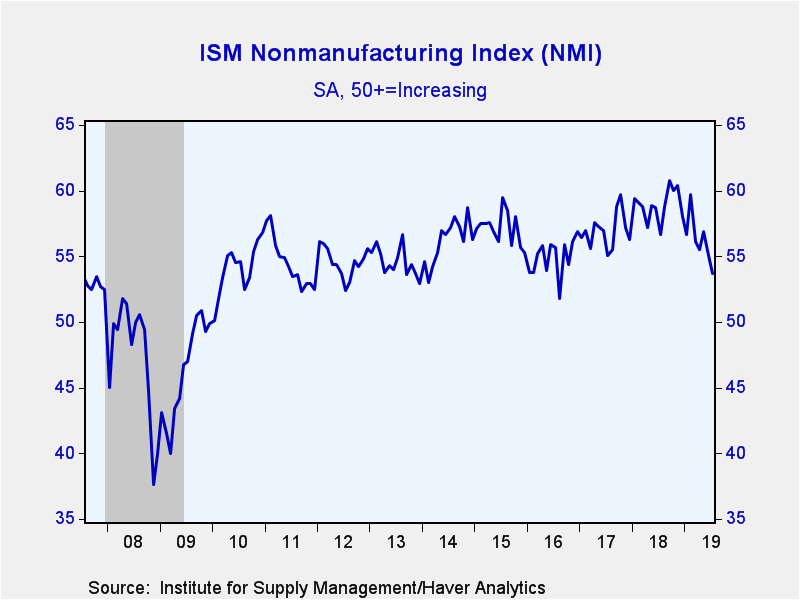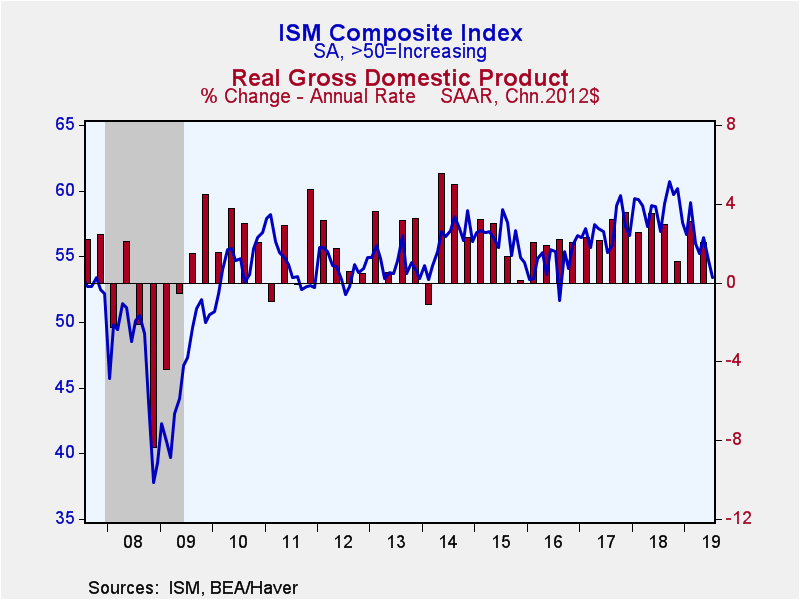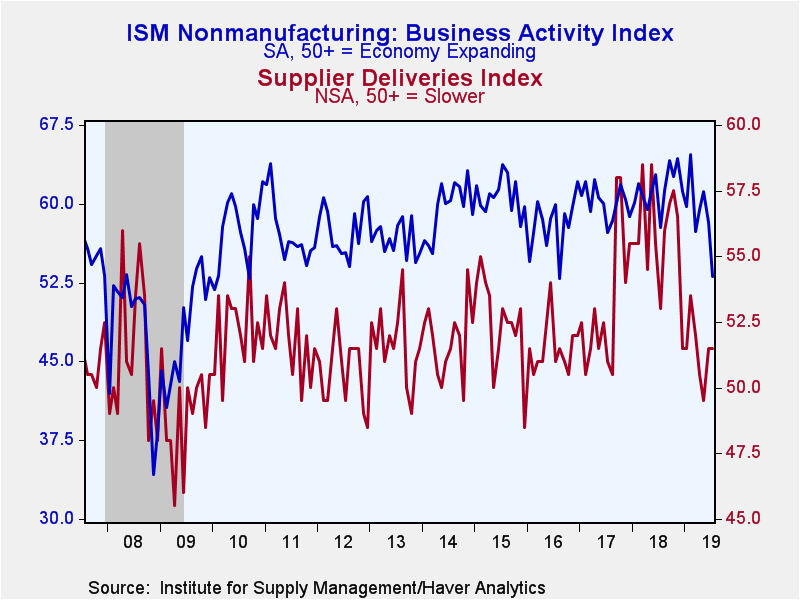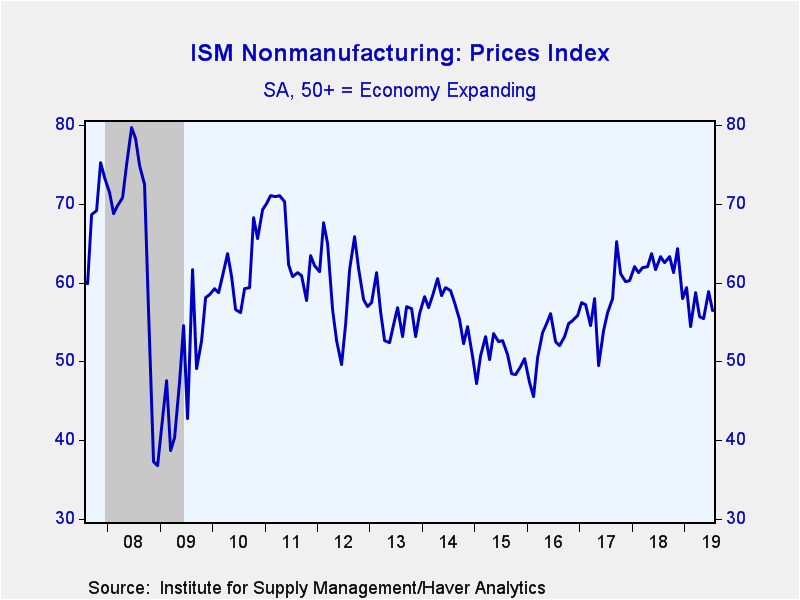 Global| Aug 05 2019
Global| Aug 05 2019U.S. ISM Nonmanufacturing Index Weakens, Along with Prices
by:Tom Moeller
|in:Economy in Brief
Summary
The Composite Index of Nonmanufacturing Sector Activity from the Institute for Supply Management (ISM) declined to 53.7 during July from 55.1 in June. It was the lowest level since August 2016. The Action Economics Forecast Survey [...]
The Composite Index of Nonmanufacturing Sector Activity from the Institute for Supply Management (ISM) declined to 53.7 during July from 55.1 in June. It was the lowest level since August 2016. The Action Economics Forecast Survey expected a reading of 55.5.
Haver Analytics constructs a composite index combining the nonmanufacturing ISM index and the manufacturing ISM measure, which was released last Thursday. This composite index fell to 53.4 from 54.7 in June. That was the lowest reading since August 2016. During the last fifteen years, there has been a 71% correlation between the Composite Index and the q/q change in real GDP.
Component indexes were mixed last month. The business activity measure fell sharply to 53.1, its lowest level since August 2016. The new orders series declined to 54.1, also the lowest level in nearly three years. The supplier delivery series held steady at 51.5, still indicating the quickest delivery speeds since mid-2017.
The employment measure improved to 56.2 from 55.0 and remained up from the April low of 53.7. Twenty-seven percent of survey respondents reported higher employment while twelve percent indicated a decline.
The prices index fell to 56.5, but it remained up from its February low. Twenty-one percent of respondents reported higher prices while six percent reported price declines.
Other series, not included in the total, weakened last month. The export series fell to the lowest level since April and was lower y/y. The backlog of orders index also weakened. The inventory change index declined sharply, and reversed three months of improvement.
The ISM figures are available in Haver's USECON database, with additional detail in the SURVEYS database. The expectations figure from Action Economics is in the AS1REPNA database.
| ISM Nonmanufacturing Survey (SA) | Jul | Jun | May | Jul'18 | 2018 | 2017 | 2016 |
|---|---|---|---|---|---|---|---|
| Composite Diffusion Index | 53.7 | 55.1 | 56.9 | 56.7 | 58.9 | 57.0 | 54.9 |
| Business Activity | 53.1 | 58.2 | 61.2 | 57.7 | 61.5 | 60.2 | 58.0 |
| New Orders | 54.1 | 55.8 | 58.6 | 59.4 | 61.3 | 59.3 | 57.6 |
| Employment | 56.2 | 55.0 | 58.1 | 56.6 | 56.9 | 55.1 | 52.5 |
| Supplier Deliveries (NSA) | 51.5 | 51.5 | 49.5 | 53.0 | 55.8 | 53.2 | 51.5 |
| Prices Index | 56.5 | 58.9 | 55.4 | 63.3 | 62.1 | 57.6 | 52.6 |
Tom Moeller
AuthorMore in Author Profile »Prior to joining Haver Analytics in 2000, Mr. Moeller worked as the Economist at Chancellor Capital Management from 1985 to 1999. There, he developed comprehensive economic forecasts and interpreted economic data for equity and fixed income portfolio managers. Also at Chancellor, Mr. Moeller worked as an equity analyst and was responsible for researching and rating companies in the economically sensitive automobile and housing industries for investment in Chancellor’s equity portfolio. Prior to joining Chancellor, Mr. Moeller was an Economist at Citibank from 1979 to 1984. He also analyzed pricing behavior in the metals industry for the Council on Wage and Price Stability in Washington, D.C. In 1999, Mr. Moeller received the award for most accurate forecast from the Forecasters' Club of New York. From 1990 to 1992 he was President of the New York Association for Business Economists. Mr. Moeller earned an M.B.A. in Finance from Fordham University, where he graduated in 1987. He holds a Bachelor of Arts in Economics from George Washington University.










